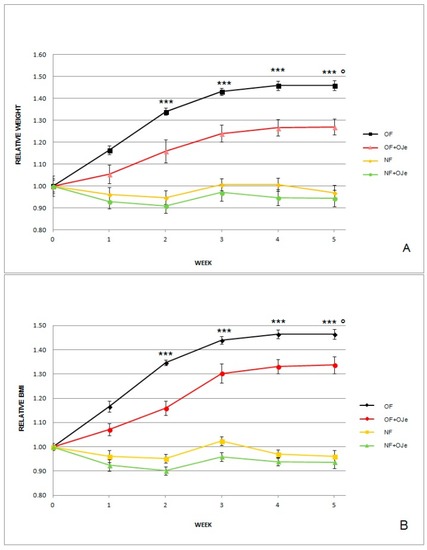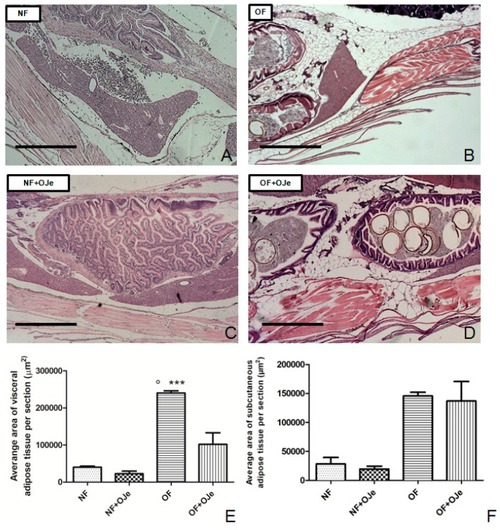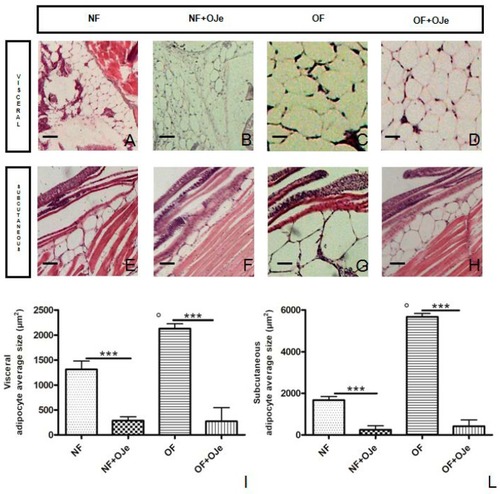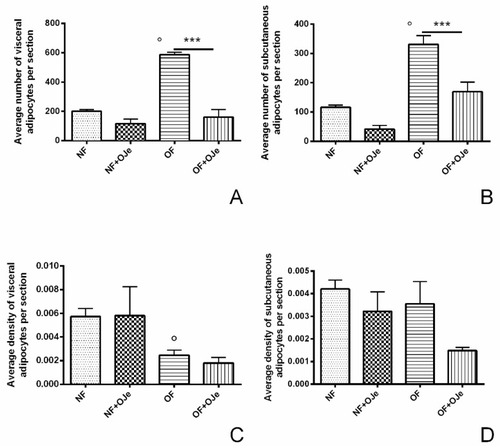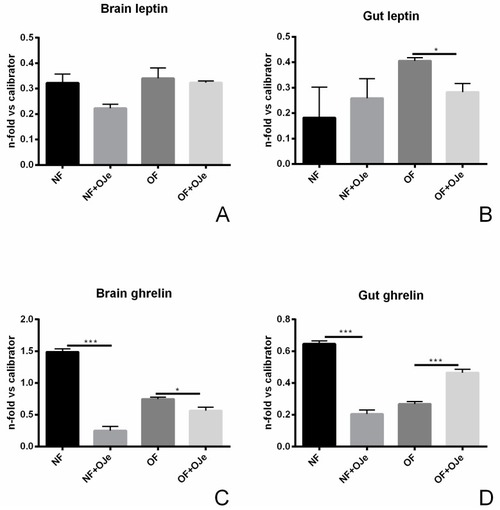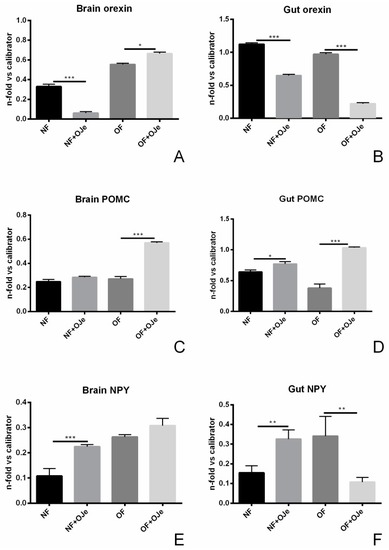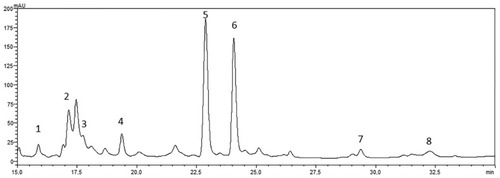- Title
-
Effects of a Flavonoid-Rich Extract from Citrus sinensis Juice on a Diet-Induced Obese Zebrafish
- Authors
- Montalbano, G., Mania, M., Guerrera, M.C., Laurà, R., Abbate, F., Levanti, M., Maugeri, A., Germanà, A., Navarra, M.
- Source
- Full text @ Int. J. Mol. Sci.
|
Effects of the orange juice extract (OJe) on both normalized body weight (BW) and body mass index (BMI) in overfed (OF) and normally fed (NF) zebrafish. Graphs show the fold change of BW ( |
|
OJe reduced the development of adipose tissue in overfed zebrafish. Histological examination of abdominal tissue of sagittal sections, performed through hematoxylin and eosin staining, showed the rise of visceral ( |
|
Effect of OJe on visceral and subcutaneous adipocyte size. Histological features of abdominal adipose tissue in sagittal sections (hematoxylin and eosin staining) showing visceral ( |
|
OJe reduced adipocyte number and density in OF zebrafish. Morphometric analysis of visceral ( |
|
Effects of OJe on the expression of obesity-related genes. The expression of leptin A ( |
|
OJe is capable of modulating the expression of orexin, pro-opiomelanocortin (POMC), and neuropeptide Y (NPY). Brain ( |
|
Reversed-phase high-performance liquid chromatography coupled with diode array detection (RP-HPLC-DAD) separation of flavonoids present in OJe. UV–Vis spectrum of the eluted molecules was monitored between 200 and 800 nm. The chromatogram was recorded at 278 nm. Flavonoids corresponding to peaks 1–7, expressed in milligrams (mg) per liter (L) of aqueous extract (mg/L), are the following: (1) lucenin-2 (6.2); (2) vicenin-2 (16.1); (3) lucenin-2-4′-methyl ester (9.5); (4) eriocitrin (11.9); (5) narirutin (62.8); (6) hesperidin (56.4); (7) sinensetin (0.52); (8) nobiletin (5.29). |

